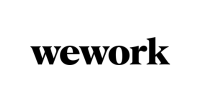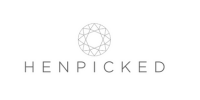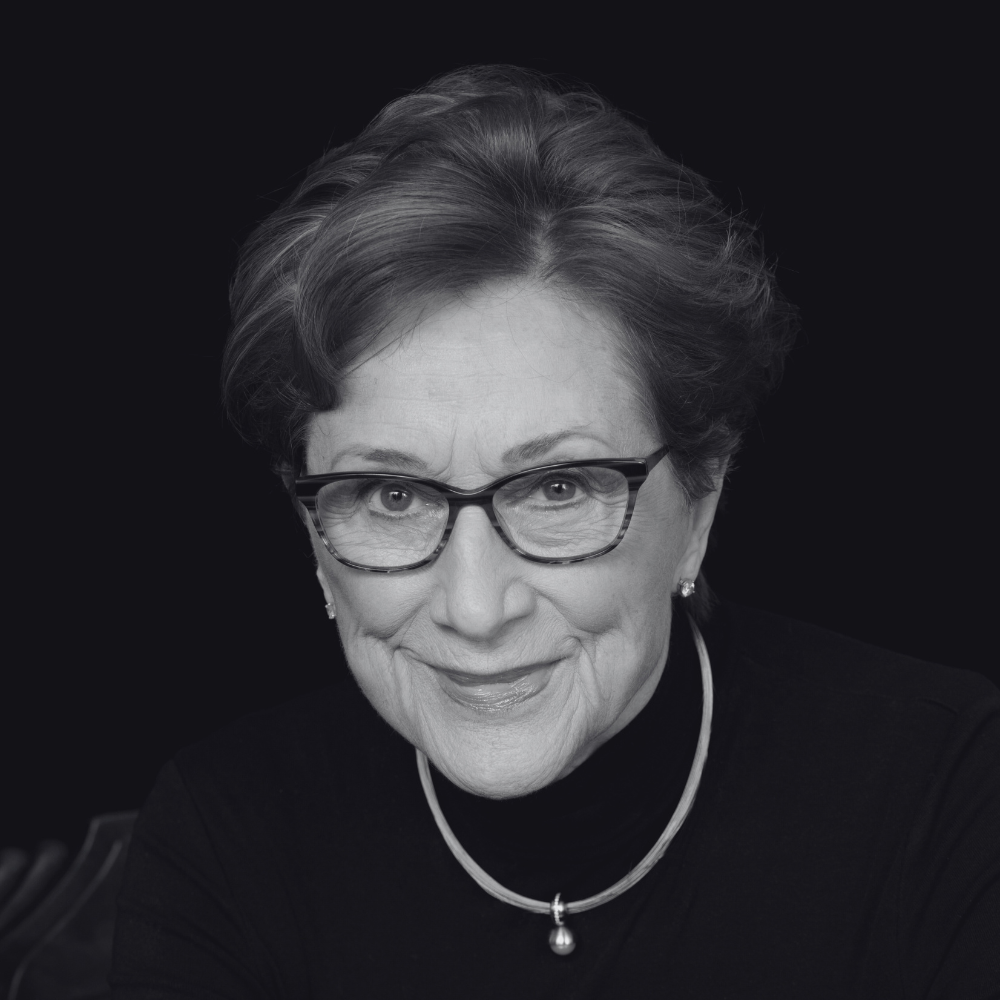Shaping the Future of Work: Wellbeing, Culture & Innovation in the Modern Workplace
The Watercooler Event is a vibrant two-day experience exploring effective ways to create workplaces that empower people to thrive. Join over 6,000 industry experts to exchange ideas, uncover transformative solutions, and celebrate the future of work.
Discover insights from industry leaders on evolving business and people strategies, network with like-minded professionals, and embrace innovative approaches to wellbeing, culture, and productivity.
Meet experts from the following disciplines:
- Wellbeing, Engagement & Mental Health
- HR & Culture
- Diversity, Equality & Inclusion (DE&I)
- Learning & Development
- Employee Benefits
- Occupational Health & Safety
Curating Collaboration with the UK’s Leading Organisations
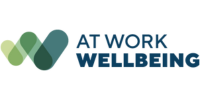


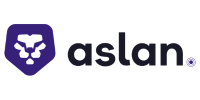






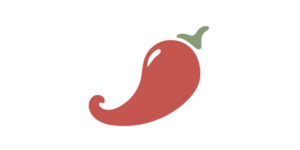
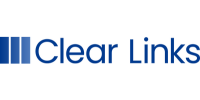


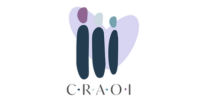




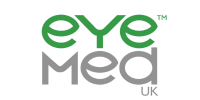
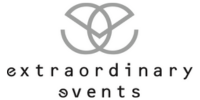


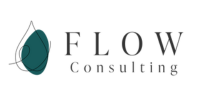
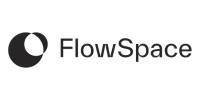







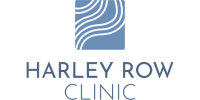
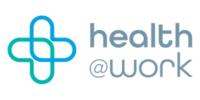



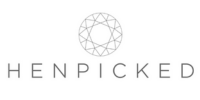






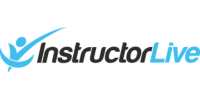

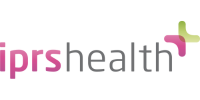
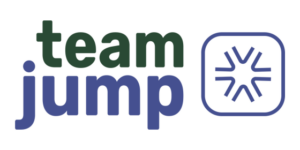
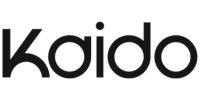





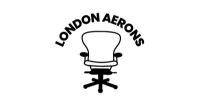
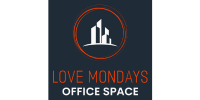

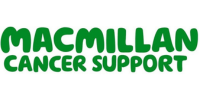



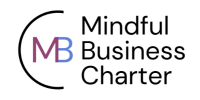
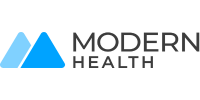




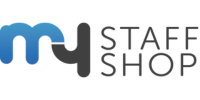




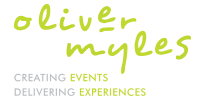

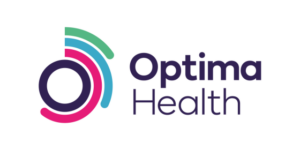




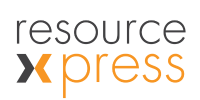

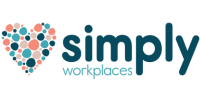
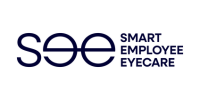




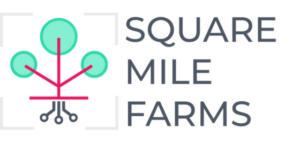



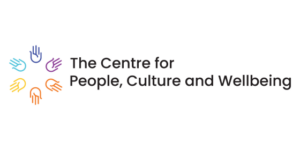







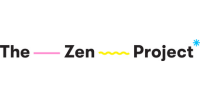



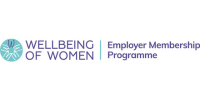




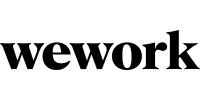
















































































































































































































































AGENDA
Delivering actionable insights to accelerate cultural change.

Speakers
Visionary thinkers from a broad range of business sectors.

Leaders’ Club
The UK’s most innovative leaders.

Exhibitors
Innovative ideas & solutions to build better workplaces.
What’s On
The Watercooler Conference and exhibition content focuses on the key pillars of wellbeing, employee engagement and culture change to enable you to build a comprehensive, strategic approach for a more productive business. As well as a series of focused workshops, the 2025 event featured three parallel tracks running across both days. Now in its fourth year, the conference brings together some of the UK’s brightest and best.

Conference
Three track conferences running side-by-side featuring thought-leading speakers and influencers, it’s held as a ‘silent disco’ format for focused and uninterrupted discussion.

Workshops
Interactive workshop sessions held within the main exhibition hall, featuring deep-dive insight and solution partner case-studies and showcases.
Working Well Beings Podcast
Exploring the Stories of Wellbeing Leaders. This special edition series was recorded LIVE at the Watercooler 2024.

Exhibition
The Watercooler exhibition is filled with leading solution partners who are at the forefront of helping businesses deliver workplace culture and wellbeing programmes.

1-2-1 Meetings
Fast-track your supplier and technology partner search via our 1-2-1 meetings programme. Just indicate your interest on the registration form and we’ll do the rest!

The Office
Get the full 360 Workspace and Workplace Experience at the gathering of workplace experts; Workspace Design, FM, Corporate Real Estate, Workplace Strategy and Property.
2025 Speakers

Dame Carol Black GBE
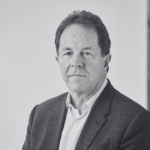
Peter Cheese


Mohammad Koheeallee


Ruth Jackson


Astha Mittal
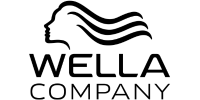

Jason Bloomfield


Carole Smets
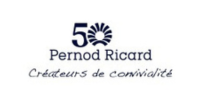

Fiona McAslan

2025 Exhibitors
Latest Make A Difference News
While stress risk assessing has been talked about for years, employers of late have been taking a much more proactive approach than ever before.
Jo Yarker, Managing Partner at Affinity Health at Work and Professor at Birbeck, University of London, who ran psychosocial risk assessments for Shell and AstraZeneca alongside her PhD nearly twenty years ago, points to several major turning points.
“Longterm sickness absence due to stress, depression and anxiety is at a record high. Employers are seeing the costs of unaddressed psychosocial risks through absence, presenteeism and turnover,” she says.
“There is also recognition that many wellbeing initiatives are not addressing the root causes of stress – we need to move away from a ‘sticking plaster’ approach to look at the way work is designed and managed, and to deliver on investment.”
Following Australia?
Another driver is that Australia updated its Work Health and Safety Regulations to include mandatory, regular psychosocial risk assessments, requiring employers to assess and control risks such as job demands, poor support and bullying – encouraging a more preventative, rather than reactive, approach to mental health.
“Even though Australia may be a long way physically from the UK, we are all more interconnected than ever due to social media, so its generating lots of interest” says Yarker.
Over stress awareness month (April), the HSE increasingly put out communications on good risk assessment practice and has been taking a more proactive approach itself recently. For instance, its probe into the University of Birmingham, following claims that employees are experiencing preventable workplace stress, has caused a stir.
University of Birmingham HSE stress probe
For a long time, there has been recognition that organisations should be assessing and should be taking action – to address both physical and psychosocial risks. But many employers don’t know their obligations when it comes to psychosocial risk, and enforcement in this area has often been viewed as challenging. The fact that it is doing this with Birmingham University is a visible act of enforcement. So if the HSE is prepared to do this for this organisation, how many others could it launch official investigations for?
Certainly, we at Make a Difference Media have heard many an employer doubting the HSE’s ‘teeth’ and its commitment to enforcing rules – this news could put paid to that. One challenge we’ve heard from employers has been knowing clearly what actions should be taken to make a change.
As Yarker says:
“If you’ve got asbestos on your roof, the evidence-based action is very clear. But for psychosocial hazards, the interventions are varied and depend on context, situation and budget, etc. This makes it more difficult to set expectations or advise one-size-fits-all approach.”
A shift is needed
As these types of interventions are often owned and led by HR and/or the senior management team, and are related to overarching business strategy, they require different skills from professionals.
“There’s a real shift needed for professionals in this space – it requires a partnership approach, working with new parts of the organisation, those that are relevant to things like job redesign or career progression, for example,” says Yarker.
For all these reasons, HSE has commissioned Affinity Health at Work, Institute of Occupational Medicine, Institute of Employment Studies and the Society of Occupational Medicine to create Project Oscar which is looking at the most effective ways to mitigate risk in different situations. (Affinity Health at Work is running another consultation later this year and welcomes input from all employers, see here).
Catalogue of interventions
The end vision is to create a “catalogue of interventions” to be used to prevent work related stress which are based on evidence. This should be a powerful tool in the industry’s fight against the perception that Health and Wellbeing is not evidence-based enough and associated with disparate, peripheral interventions that are not known to be effective.
“The challenge in the wellbeing space to date has been that the intervention isn’t always matched to the outcome that the employer wants to achieve,” says Yarker.
This is exactly what one engineering consultancy, Mott Macdonald, found. It started running wellbeing activity in 2015 but, at this time, “it was about support and awareness and we had many initiatives going on run by local employees, but little strategy and we didn’t know if the spend was actually benefiting our organisation,” says Dr Laura Hague, Group Safety Manager at Mott Macdonald, who oversees the firm’s global programme.
Adding Wellbeing to Safety
Hague comes from a traditional Health and Safety background and, so, when Wellbeing was added to the function she spearheaded centralising all activity and asking the question: what are we looking to achieve?
“Health and Safety is about trying to get to the root cause of symptoms. So if we don’t understand why something’s happened, it’s really hard to say ‘this is what we’re going to do to prevent it happening again’,” she says.
Consequently, Mott Macdonald has been focusing on really understanding the issues its employees face from a psychosocial perspective. It’s done this through data gathering via surveys and listening to its people to understand the story beneath the numbers: if people have taken time off work why has this been?
What are the root causes of stress?
“If you look at days lost due to health and safety accidents versus days lost due to work related ill health, the latter is far bigger; most of it is psychological/ psychosocial in nature,” says Hague.
Now there’s a protocol where the employer asks: how can we prevent this happening again? What steps can we take? What were the risks and what controls are we going to now put in place?
As part of Mott Macdonald’s mission to give back to the industry, Hague has led the creation of an industry guide to help organisations balance commercial and people focussed priorities. (For more info, see “Managing wellbeing risk: A Practical Guide for the Engineering Consultancy Sector”.)
We need specifics
Hague advocates, like Yarker, that we need, as an industry, to work towards specifics.
“A lot of the time, wellbeing interventions can be very generic and broad and it can be difficult to work out ‘how is that going to help the individuals on this project?’” she says.
She suggests coming back to the management standards, and clarity about role and scope, is helpful as is “agreeing with our clients about acceptable behaviour and what we will do, and how we might escalate things, if there are relationship issues on a project”.
Management standards are a strong foundation
With over 30 years of experience in the industry, Carole Spiers, Founder of the International Stress Management Association, has seen the landscape of Workplace Wellbeing evolve significantly. Yet despite these changes, she maintains that the management standards remain a strong foundation—even if they’re no longer new.
“I know the standards are quite old now, but they will still hold you in a good state,” she says.
She highlights the ongoing relevance of being alert to key risk areas such as excessive workload, role ambiguity, and unrealistic expectations.
Subjective nature of stress
One of the greatest challenges, she believes, is the subjective nature of stress in the workplace.
“Some people will perceive a situation as ‘pressure’, while others will experience it as ‘stress’,” she explains. “So how do you assess that risk? It’s not easy—and, for me, you can only do it effectively by making time to talk to your people.”
And that, she says, is where organisations often fall short.
“Employers and line managers frequently say, ‘But we haven’t got time’. Yet the truth is—you can’t afford not to make time. If you want to reduce stress and protect the wellbeing of your people, those conversations are essential. You have to manage that stress. Unless we carve out time then, whether stress appears on your risk assessment or not, makes no difference.”
You might also like:
Stress Risk Assessing: why is the ante being upped now?
Harry and Meghan, the Duke & Duchess of Sussex, are backing a hard-hitting campaign to raise awareness of online abuse, and consequent mental ill health, amongst young people in particular.
The high profile couple is doing this by putting their business’s name, The Archewell Foundation, to a public art installation featuring 55 giant smartphones, each showing the face of a young person who took their life due to online abuse.
By using these arresting ‘monuments’ of mobile phones the campaign aims to confront online harm head-on, showing clearly the real-world consequences of digital harm.
Moving beyond stats to stories
The advertising experts behind the idea, M&C Saatchi, wanted to find a way – as many employers also strive to achieve with their communications – to move beyond statistics and news headlines and encourage viewers to resonate personally with the message. It concluded this innovative way of telling the stories behind the statistics was the most effective way to do this.
The campaign garnered widespread media attention, including national coverage from BBC News. It sparked public conversations around online safety and the responsibilities of technology platforms.
The technology was created by Giant iTab and its 55 smartphone installations were exhibited on a rooftop in New York City.
Harry and Meghan have talked openly about how online abuse has affected them personally in the past, and their worries for their two children, prompting them to set up a programme to support parents.
But it’s not just children experiencing bullying or harassment online. There’s also much concern in the business community that the move to hybrid is leading to more digital bullying. For instance, a survey from The Workplace Bullying Institute in 2021 showed that 43% of remote workers said they had experienced workplace bullying, with the number of tribunal claims for bullying rising 44% in the UK in 2022.
You might also like:
Harry & Meghan shine a light on online abuse in smartphone campaign
If you missed last week’s The Watercooler and co-located The Office events, or you simply want to revisit the content, we’ve put together a page of the presentations that we’ve been given permission to share here.
We’ve had great feedback to the event from attendees. Karen Kidd, Group Health & Wellbeing Manager, People & Places, Lloyds Banking Group shared: “I thoroughly enjoyed The Watercooler & the Office 2025. I listened, I chatted, I networked. My head is FULL of ideas, with lots of new connections (and friends) made. A huge thank you to the organisers. Roll on next year”.
Meanwhile for Somayeh Rahimi, Group Wellbeing Manager, Gamma, the highlight was the Leaders’ Club workshop focused on what members can do to shape the supplier landscape and drive change with our collective employer voice. She said: “Thank you for another wonderful event! The Leaders’ Club workshop was so informative and I’ve taken away a lot I can implement”.
You can access the PDFs of the presentations that we have permission to share here.
You can find out more about joining the Make A Difference Leaders’ Club here.
For more insights from The Watercooler and The Office events, take a look at these articles:
Presentations from The Watercooler and The Office 2025 events
Nervousness talking about Health and Wellbeing issues, especially DEI, and which words ‘should’ and ‘should not’ now be used, emerged as one of the central themes of this year’s Watercooler Event.
Delegates and speakers praised the event for offering a safe space where professionals could talk openly with their peers about how to handle this tricky topic, discussing real life scenarios they are experiencing. The importance of bringing people together is particularly pertinent this week given it’s Mental Health Awareness Week and the theme is ‘community’.
Importance of community
One Director of Global Benefits at a FMCG company, who is part of the Make A Difference Media Leaders’ Club, said:
“It’s always useful to have a community of leaders who you can share your thoughts with and bounce ideas off, or get feedback. You get to speak to people in the same role but at different organisations so you get different ideas. Definitely, stepping out to events like this is really, really helpful. Yes we are all busy but it’s up to us to make that time and come and do it. The intent needs to be there.”
Many sessions and workshops touched on language, with attendees recounting stories of certain words being surreptitiously removed from company literature, and others saying reactions to the backlash were more overt.
For instance, in a session on neurodiversity speaker Wendy Macartney, Psychologist & Senior People Business Partner at Nedbank Private Wealth International, said the audience’s questions about language opened up a very helpful, “human” discussion.
Human conversations
She said:
“When we focus on semantics, people get confused. I think we need to let people say what they say. That doesn’t mean, of course, being cruel but it means that we accept when someone uses another word, or one that is similar [to the one we might prefer they use].”
She added that to foster understanding between people who hold different views, and perhaps use different language, “human connection” is essential:
“That’s why face to face events like The Watercooler are so important. They make a huge difference. You can meet people and interact with them and you have the opportunity to change minds and share information.”
Language naturally evolves
Macartney said that conflict, too, is best explored “face to face”. Her experience of bringing different people together in the office has been that it leads to a more “human” interaction. With this humanness, the language between people often naturally changes and becomes more understanding of each others’ perspectives.
Fellow speaker and Executive Coach Selina Suresh, who spoke on ‘Why Gender Equality Is Best for Men’, agreed:
“What I loved about the audience’s questions is they showed their comfort to ask what they were really thinking, versus shying away from a question. I loved how questions got into the practical of ‘what do I actually do in this situation?’. So, it’s not just talking about the problem or theory. It’s important at events that people go back to the office knowing what they would actually do.”
Over medicalisation of language
Some speakers and audience members also argued that Health and Wellbeing language has become “over medicalised” in the workplace. Others said they are finding new ways to talk about DEI without actually saying this acronym, or other potentially ‘triggering’ words like ‘diversity’ or, even, in some cases ‘inclusivity’.
For instance, one speaker spoke about delivering a DEI session to a large American corporation but positioning it, instead, as “leadership development”. While this may at first appear to be ‘turning against’ DEI, delegates discussed how this approach actually makes it easier for leadership to engage with the issues and for strategies to be embedded across the entire organisation, not just in siloes.
Think about the outcome you want
Speakers urged audience members to bear the outcome in mind and find creative ways to keep DEI on the leadership agenda. The theme of embedding Health and Wellbeing from the top, across the organisation, also came up repeatedly across the Day 2 Agenda of the Watercooler’s 4 streams: 1) Strategies & Leadership for Engagement & Culture 2) Prevention, Intervention, Holistic & Inclusive Wellbeing 3) The Office 4) Workshops.
One innovative way to do this mentioned was by treating the office as an employee Health and Wellbeing benefit. With so many employers adopting a hybrid model, the office is ideally placed to lead company culture in terms of how wellbeing, connection, collaboration, community, different ages/stages/ backgrounds/ working styles are cultivated.
Speaker Sofi Musleh, Executive DEI Leader, commented that she valued the discussion in one session, on Women’s Health, to engage leadership by promoting a “broader definition of ROI”.
She said:
“This was discussed in the empowering inclusive women’s health talk. It asked: what are you actually, systemically, changing for your place to be more inclusive?’ and the need for it to become part of the DNA of the organisation. It covered the fact that a lot of these conversations get lost in the conversation about ROI. But, when employers look at DEI issues on a bigger scale, the ROI is much broader in terms of employment, or even marketplace value for your company and the recognition it has.”
You might also like:
When Language Gets Tricky, Connection Becomes Key
The CIPD reported in 2019 that only a quarter of employees can freely express themselves at work, particularly in the public sector.
But, since then other events have increased global conflict and polarisation; new ways of working, a cost-of-living crisis, the DEI backlash, exponential AI growth, to name a few.
Consequently there are two camps: a small number who feel they can speak their truth (sometimes without thinking of the consequences), and many others who are afraid to express opinions.
Diverse opinions are key to success
But clear communications and diverse opinions are key for workplace success. What does it mean for them? For sharing ideas with respect? If three in ten don’t feel comfortable taking risks and sharing thoughts with others in the organisation, are differing thoughts, ideas and opinions genuinely no longer valued?
Why is the problem worse at the moment?
There is an increased social threat and fear of having to choose between peer acceptance and our own moral boundaries; these lines continue to become blurred through social media.
Not caring about consequences
It is well documented, and many of us have experienced, that sharing opinions (especially online) without caring about consequences means people feel they have the right and the space to say anything.
Worse still, those with platforms speak up, worryingly influencing those who don’t fact-check or are afraid to think otherwise. Group psychology means a herd effect, and we are more likely to follow vociferous people. We may even alter our values and morals to conform.
Many of us have become too frightened to speak up for fear of a negative reaction, no reaction or support. It’s even harder in a toxic culture when we are also frightened of losing our jobs in a difficult economic climate.
The psychology of speaking up
When choosing to speak out, the brain considers two factors: how confident we are in our opinion, and how much we want to be accepted or seen as polite. We know that people with low confidence tend to adjust their answers even if they go against their moral standpoint and are more likely to follow the crowd. Individuals also conform more to certain opinions if they receive confirmation and validation from someone else.
‘Cognitive dissonance’ is the uncomfortable feeling of having two or more conflicting beliefs, values, or attitudes simultaneously. It means we have to change our thinking to find some sort of outcome and balance. This can be caused by a need for compliance. We end up absorbing the emotional toll of this internally, possibly leading to burnout, stress, and anxiety.
Conflict; harder to think
Conflict makes it harder to think clearly by impairing cognitive flexibility and reducing emotional regulation responses. The brain views conflict as a threat and heightens emotions, triggering instinctive responses such as fight, flight, or freeze.
But viewing a difference in opinion as conflict means we have lost the art of conversation, lost connections with one another, and cannot give feedback on what we have just heard. It is affecting our resilience which is a skill that improves problem-solving, leadership, relationships, and well-being in the workplace.
Signs that the workplace doesn’t value opinions:
• A shift in workplace dynamics where there is now a toxic environment
• An ultra-sensitive culture where workers are walking on eggshells, frightened to say anything or overly trying to do the right thing all the time
• Group-speak with few willing to challenge the status quo and speak up, disagree, or share a differing opinion
• Minorities silence themselves out of fear or isolation and worry about rejection or negative repercussions. Maybe top performers/ creatives have become silent observers
• A sense of unfairness all the time
• There is a lot of conflict and complaints that are left unresolved
The pros of sharing our thoughts and opinions:
Employee voice is crucial for organisational success, innovation, communication, problem solving, performance and employee wellbeing, engagement and autonomy.
Learning to overcome our fears and speaking up can build confidence, develop team connections, improve resilience and positively influence others to share.
Seven key ways to ensure we speak up in the workplace:
1) Create the right space: value conversation and create opportunities for it in the office and online. Cultivate an open-door culture and create feedback loops or surveys to prioritise communication.
2) Create a culture of learning from mistakes:ensure mistake are not deterrents for people from speaking up or trying again and is instead seen as an opportunity for learning and growth.
3) Find common ground: reiterate shared corporate values to build trust so employees can begin to feel safer contributing and are likely to become more involved.
4) Have visible leadership: leaders can show others how to speak up, communicate well, model transparency, be present to listen to new ideas and include others.
5) Support your line managers with skills like reading between the lines and picking up when things are left unsaid. Train them to actively listen and welcome diverse opinions.
6) Help employees become more confident to share by initiating conversations, especially with those who are suffering from imposter syndrome or those who are more introverted or neurodiverse. Level the playing field. Cognitive dissonance can be reduced by understanding that your voice is valuable, as are others. Not speaking up seems safer, but speaking up could help you, your colleagues, and the business as a whole.
7) As well as training managers, employers can also support all employees with skills to help them express themselves, especially in stressful or high pressure moments. Metacognition, for example, is being aware of one’s own thinking and can be trained so we can reframe our response to different opinions so they are not seen as a threat which prevents us from sharing ours respectfully.
About the author
Dr Lynda Shaw is a Behavioural Neuroscientist and Leadership Psychologist and Founder of Brain & Behaviour Ltd and the Consciousness Academy. She works with leaders to tackle challenges like fear, bias, and unlocking hidden potential and helps employers build more productive teams, make smarter decisions faster, and create a stronger sense of belonging among teams.
You might also like:
Are different thoughts, ideas and opinions no longer valued at work?
One of the challenges we’re constantly being asked is: how do we get our senior management to buy-in to Health and Wellbeing? We put this question to Executive Vice President at Bosch, Arun Srinivasan.
He is an advocate for employee wellbeing having done different types of training himself, such as work on resilience with consultancy Awaris, which transformed his thinking and approach.
This work looked at the results of a resilience assessment in which four key themes were identified to strengthening collective resilience and handling of stress:
- connection to purpose
- attention and focus in a fragmented world
- positive outlook
- connection and wellbeing
We spoke to Arun for more on his views on the Health and Wellbeing function…
How do we get Senior Leaders to buy-into things like training which focuses on Health and Wellbeing, and understand their importance?
Health and Wellbeing is an integral part of business.
We have an open style of leadership here, which means that often teams take the initiative themselves, facilitated by HR, and take on the training they believe is necessary for them.
It makes sense to ensure that your people are able to take on the stress of a job but also, at the same time, you’re motivating them and ensuring they’re able to deliver to their potential. Why else would you pay someone a salary and recruit them, but not give them the tools they need to be successful?
As a leader, when it comes to people and how to help your people thrive, what’s been the most useful training or experience you’ve had?
Over a period of about a decade, we worked with a psychologist to understand the implications of organisational behaviour and politics. It was about understanding people and character, which was extremely useful for the leadership team.
Why was it so useful for the leadership team?
I suppose we learned a lot more about ourselves.
We looked at why and how people talk. It’s helpful to understand what kind of person you’re speaking to and how your message is landing. It makes you think about how you would deliver a message so it makes sense to the other person.
And we had to be very honest as a leadership team, amongst ourselves, examining our own characters, motivation and prejudices. We had to ask ourselves questions like: am I doing this to support my ego, or is it the right outcome for the company, or the situation?
You have to create a safe environment for those questions or people will find a way of avoiding them.
It’s been brilliant as it’s given us a language of conversation within the leadership team.
Even a senior person will stand in front of the mirror sometimes and ask: am I doing the right thing?
It’s important to be able to have honest conversations that require a certain understanding that the relationship is steady and there is a certain amount of resilience among the individuals involved. That is where you can make real progress.
We write a lot about psychological safety and creating an environment where people feel comfortable making mistakes. What do you think about this idea?
It’s critical to be able to say ‘why did that happen?’ and ‘what could we have done differently?’
Humans are not like software packages. They need to grow into their roles and challenges and for that they need a safe environment to try things out and make decisions on their own.
A mentor or a coach can also really help in this process. This has also worked well amongst the leadership team.
Can you tell me about your work with Awaris?
I watched Chris [Chris Tamdjidi, Managing Director, Awaris] do a session in Germany with some of our senior leadership and I reached out to him.
The thing about Awaris that appealed to me is that you can get a lot of this information from things like reading books but, for me, it’s the experiential aspect of learning that really gets the message home.
It’s personally going on a journey that makes all the difference. You can, of course, watch lots of content and collect knowledge, but it’s not the same as an experience.
We did a lot of work on how you pick up issues that may be going on in your organisation, or with a colleague.
How do you believe you achieve cultural change in an organisation?
Organisational transformation of magnitude is driven by people much more than processes. It’s important to understand the human side and you have to bring your people along for the journey.
So often companies focus on getting the financials right, then the product right, and then the process right… Almost, as an afterthought, businesses consider the people side. But that is the wrong way round.
The power of any transformation comes from people.
You might also like:
View from the top: how Health and Wellbeing can get Senior Leadership buy-in better
Day 2 of The Watercooler Event continued to deliver valuable insight from industry leaders about what has worked for them (and not worked) from a strategic to practical level.
For example, two executives from British Airways took to Theatre 2’s Stage – the Prevention, Intervention, Holistic and Inclusive Wellbeing stream – to talk about how the business has successfully reduced absence and increased productivity through its musculoskeletal health strategy.
As mental health sometimes attracts the limelight, the importance of physical health, and its close connection with mental health, can be overlooked. But as Lina Chauhan, Muscoloskeletal and Ergonomic Specialist at BA Health Services pointed out, a quarter of all absence from work is actually attributed to musculoskeletal ill health, a figure that is only set to rise with the ageing workforce and later retirement ages.
Link between physical and mental health
Recognition of the link between musculoskeletal health and mental health is central to the way BA is now supporting its colleagues, the vast majority of whom have jobs which require constant heavy lifting, pushing and pulling.
The employer reinvented its approach to physical health to “encapsulate the person as a whole”, said Chauhan, recognising that physical injuries “affect everyone” in terms of “how we feel in work or at home”.
She added that the new strategy moved British Airways towards “preventative and proactive management”, rather than reactive, which has traditionally been the way occupational health has typically dealt with musculoskeletal problems.
“Our vision was to transform from a reactive to a more strategic and impactful approach,” said Chauhan. “We wanted work to be seen as part of the rehab because it’s important to be in work for body and mind. But, in the past, the model has been ‘fall ill, take time off work, get well, come back’.”
New rehab centre in T5
The first step was to use data, analysing what colleagues had said in surveys had affected their work in terms of physical health and British Airways used this to set up a rehabilitation centre in the heart of the new T5 terminal. The fact that this is prime retail space in the airport sent a strong message to employees about how seriously leadership is taking the health and wellbeing of its people.
But as she stressed, the message isn’t only related to work; it’s important to her that employees understand British Airways wants to keep people “strong and fit so they continue to have a good quality of life into retirement too”.
Rehabilitation, however, goes much further than just standard physiotherapy support; all support is now personalised and tailored to that person’s job and the physical strength they need for the activities they do. Support also includes tailored rehab classes on an ongoing basis.
Collaboration with Health and Wellbeing
“The feedback has been great. Employees are astonished that British Airways has invested in them like this, and it’s something they can do in work time,” said Chauhan.
Key to the success of the new strategy has been collaborating with the wellbeing team, especially given the well-evidenced links between poor physical health leading to poor mental health, with those suffering persistent pain four times more likely to develop depression.
Maurice O’Connor, Wellbeing Manager at BA, explained that alongside the focus on musculoskeletal health the employer has launched new communications aimed to encourage employees to use the breath of support available.
The ‘Big Check In’
For instance, ‘The Big Check In’, raising awareness of the importance of learning your key numbers around your health, and the ‘Personal Safety Card’ detailing ways employees can be proactive about their health, with details of health provision on the back of the card.
The most successful element of this awareness campaign, however, has been offering access to the celebrity fitness personality, the Body Coach Joe Wick’s app.
“This is probably one of the most successful launches we’ve done in terms of engagement because there’s an awareness of him already so they can see a real benefit in free access to his app. Not only that, we took the off the shelf product and tailored some content just for British Airways, with Joe recording workouts on site,” said O’Connor.
Measuring beyond absenteeism
To measure success, the team looked at the usual effect of physiotherapy on return to work rates over the last few years in order to predict the ROI for the impact of an intervention like the new centre. But as well as this the team stressed the importance of measuring the value that employees say this kind of support brings them and how engaged they are in the provision.
“We want to look at what really matters to individuals and how they feel about their day to day activities as a result,” said Chauhan.
This echoed what other speakers said at The Watercooler throughout the day about the importance, and benefit, in developing a broader understanding of Health and Wellbeing and related metrics beyond the usual measures like absenteeism.
Watercooler Day 2: British Airways puts musculoskeletal health centre-stage
Employers need to prioritise humanness and connection to avoid sleep-walking into an automated, isolated workplace which is bad for wellbeing and productivity: this was a key theme speakers were warning delegates about today, on the first day of The Watercooler Event at Excel London.
As Peter Cheese, CEO of the CIPD, emphasised in a panel session on AI, it’s crucial that the industry “consciously designs” good work, but too many are currently slipping into tech-led cultures which sideline humanity and connection.
“We need to lean in as a profession to design jobs of the future. There’s big opportunities but we need to design them. It won’t happen by accident,” he said.
AI is the greatest mirror yet
A particular opportunity he cited was the ability for AI to be the “greatest mirror yet created to understand inherent human bias”. This awareness would then enable organisations to better tackle bias in their individual cultures.
He added that this would require addressing tough questions about what it means to be human and what kind of humanity we want to design into the workplace of the future.
“The more we talk about tech, the more I’m hearing about the importance of human skills like collaboration, critical thinking and empathy. We need to train our managers better through this change,” he said.
The panel agreed that there are many positive opportunities for AI to boost both productivity and wellbeing by facilitating connection and humanness, rather than detracting from these.
Free up time for people related work
Kirstin Furber, People Director, Channel 4, for example, advocated for using AI to free up time for more “challenging” people related work to enhance working relationships. Similarly, with tasks like copywriting and preparing presentations, while AI can increase productivity and reduce stress by saving time, it only works she said “if we add the human element ourselves”.
Likewise in the session on the future of EAPs, a key point to emerge was that employers can have all the sophisticated technological solutions in place but, if you don’t communicate to employees about them in a human, relatable way, you will not get high uptake.
Panellist Farah Khan, EMEA Head of Wellness at Goldman Sachs, who spoke about how a new approach using Lyra Health had led to an increase in EAP uptake said:
“It’s all about how you package your support. It can be confusing for employees. Should they use the EAP? PMI? The NHS? You have to communicate that you will help them understand the support there for them. It has to be succinct and relatable.”
Humanise work again
Similarly, Dr Eliza Filby, Author of Inheritocracy, in her fireside chat with Dame Carol Black about the multigenerational workforce emphasised the power of connection and humanness to create thriving workplace cultures which work for all ages.
She called on the industry to put human to human connection at the heart of their intergenerational strategies as the best way to foster better, more productive working relationships. She talked about the detrimental effects of the “destroyed bonds of connection” in society – like the demise of the Church, increased remote working and automisation of daily living, such as automated supermarket checkouts – and how this has created an opportunity and responsibility for employers to provide essential connection to fill the wellbeing gap.
“We have so few human interactions now. Life is being dehumanised. And at work we’ve tried to turn robots into humans, and humans into robots. We need to get back to humanising the culture of work, and that doesn’t mean running a wellbeing programme. It means giving time and space to delivering human-centric management and connecting on a human level.”
You might also like:
The Watercooler: employers need to address lack of connection & humanness in new world of work
Tackling conflicts head-on is basic to avoid being taken hostage. When we do not address a problem and take action to solve it, due to passivity or the inability to make a clear choice, we are acting like a hostage.
When we have a hostage mind-set, we come to believe in the mind’s eye that a problem cannot be solved and so, interestingly enough, find ways not to solve it.
But, in fact, the opposite is possible: learning to enjoy solving conflicts is a possibility for everyone.
Maintaining the bond through conflict
A secret of successful conflict resolution is the ability to continually maintain the bond and to re-bond when a bond is broken too quickly, for whatever reason.
Taking a positive approach to conflict involves understanding that bonding is fundamental to any resolution. Being curious and creative, and searching for compromise and cooperation, have their own rewards.
The manifestations of conflict are many, yet the principles for resolving conflict are simple.
Understanding and knowing the complexity of conflict and, at the same time, understanding its simplicity is an essential mind-set that we have observed in great peacemakers, mediators, and hostage negotiators.
It can be dangerous to see only complexity or only simplicity. Managing this paradox is the dilemma in every conflict situation.
4 Fundamental principles
As used by hostage negotiators, there are four fundamental principles to resolve conflict successfully:
1. Never create an enemy
Transform adversaries into allies and partners. This is a fundamental principle of transactional analysis, as expressed in Eric Berne’s phrase “I’m OK, you’re OK.”
This idea is both a central truth and a fundamental tool in communicating mutual respect, positive regard, and cooperation. Every transaction must carry the power of this message – even when using strong, limit-setting boundaries, referred to as “tough love.”
2. The person is never the problem
Separate the person from the problem and focus on the issues to be resolved, not the individual.
This is a basic principle to avoid escalations in the conflict-resolution process. It can be counterintuitive because our culture promotes the “demonising” of individuals in the political and religious arena, in children’s literature, and in Hollywood films.
It is hardly surprising then that we tend to personalise a conflict at work or at home, unless we have learned another model from strong secure bases.
Often, the thinking is that if only we can get rid of the person, then everything will be okay. This is a mind-set challenge and, once mastered, will prevent us from being taken hostage in the emotions of a conflict.
It is all too easy to view someone who is different from us in any way – be it appearance, language,culture, attitude, or approach – as a potential threat or enemy.
This is a poor base for dialogue and is likely to lead to an emotional standoff.
As our businesses are increasingly global and our workplaces and cities become more and more diverse, the possibilities for misunderstanding are immense. It is easy for a person to feel attacked or threatened, and therefore every effort must be made to separate the person from the problem.
3. Maintain a sincere desire to help the other person get what they want or need
It is all too easy to become hostages to ourselves by overemphasising what we want without first communicating a sincere and authentic desire to help the other.
We must maintain the bond with the other person in every transaction, verbal and nonverbal, by showing interest in what they want as well as what we want. Saying no, or putting the fish on the table, can be done as part of showing interest in the other person’s wants or needs.
Sometimes the underlying battle in the conflict is to get the detached manager to show appropriate and authentic interest in the wellbeing of team members.
The independent loners must learn to bond and show interest in people if they want to become effective leaders.
4. Never be hijacked by attacks and intense emotions
Never take aggressive words or actions personally.
Keep your thoughts clear and never lose sight of the goal.
When you feel like withdrawing or attacking someone, quickly cancel that thought in your mind’s eye and replace it with a desire to help or a desire to carry on in your personal or professional role. Have you ever done or said something that you regretted later?
You were quite simply taken hostage.
About the author
Professor George Kohlrieser, is Professor of Leadership and Organisational Behaviour at the International Institute for Management Development (IMD). He is co-author, with Andrew Kohlrieser, of Hostage at the Table (2nd edition), and this article is adapted from an extract of this book about ‘Forming bonds in high pressure environments’.
You might also like:

